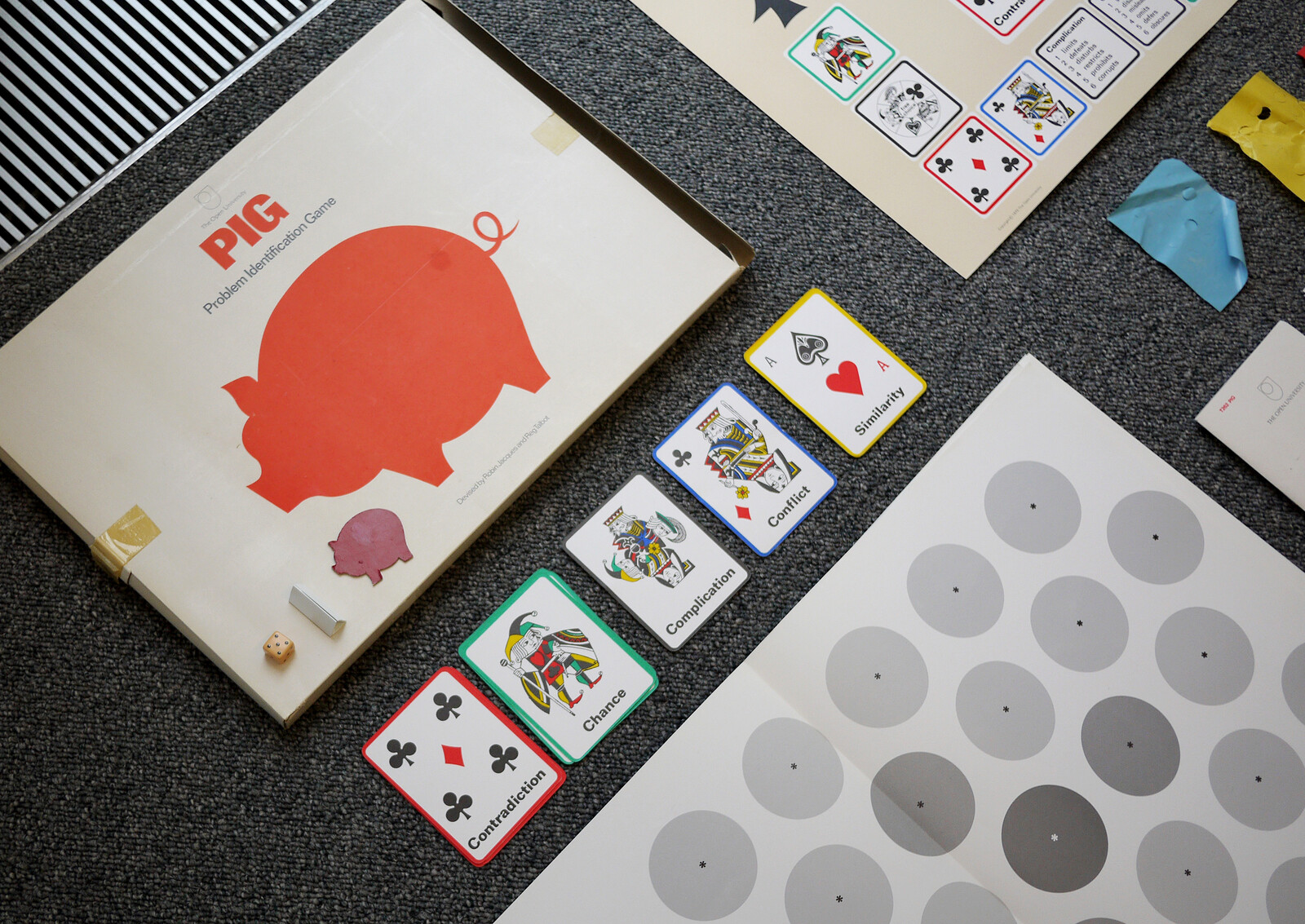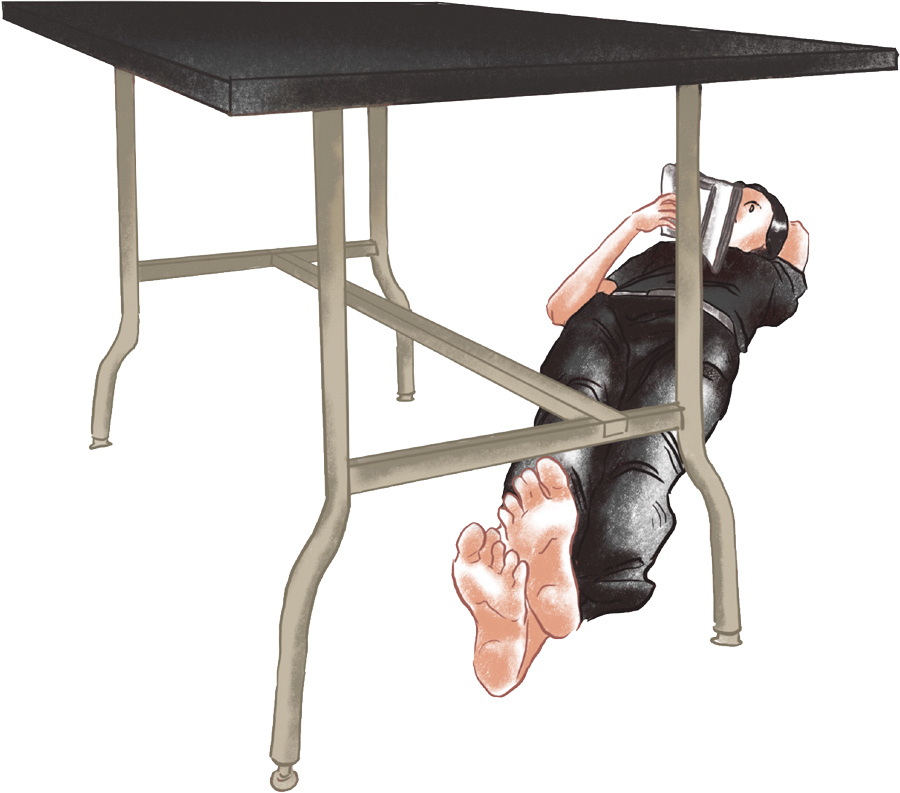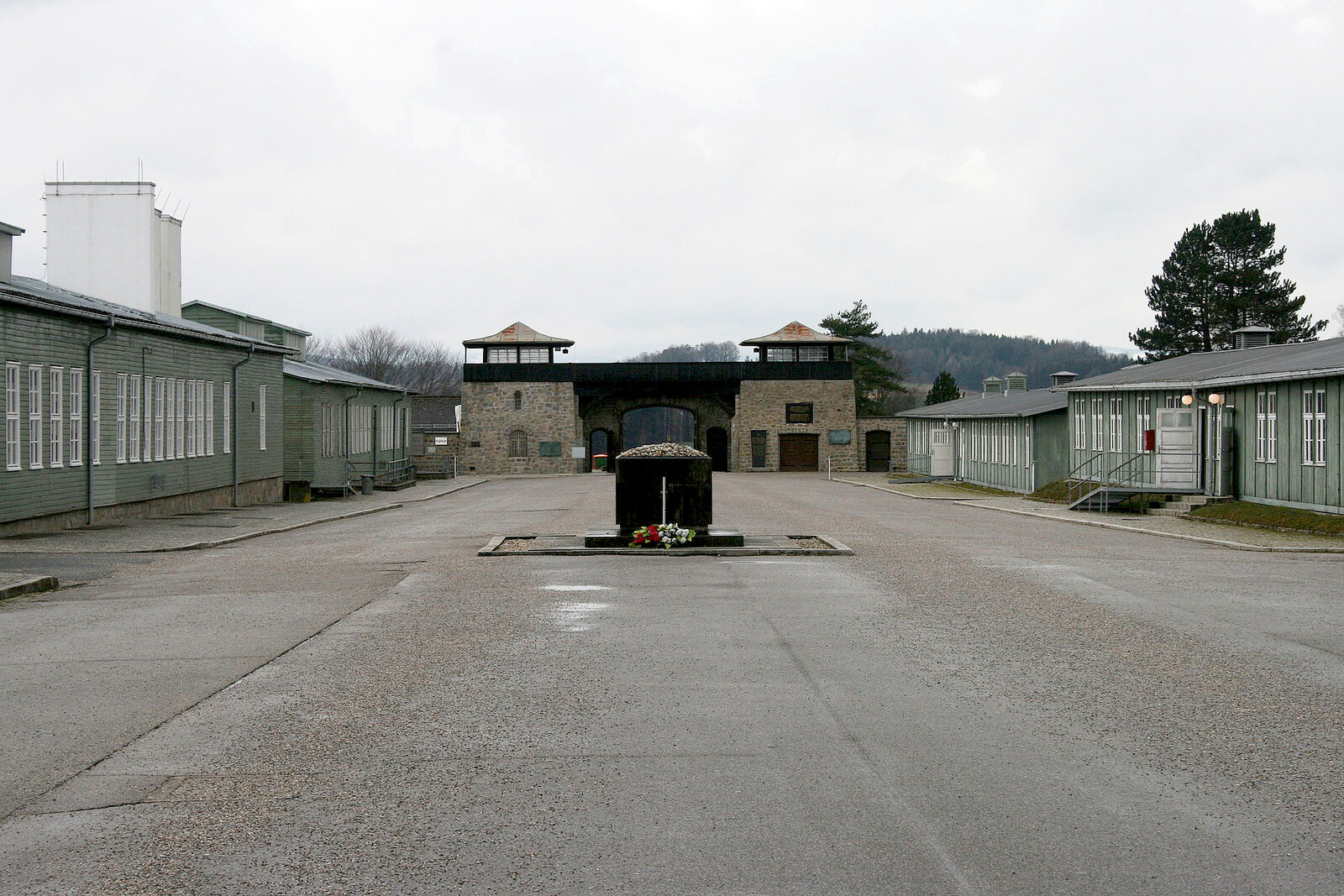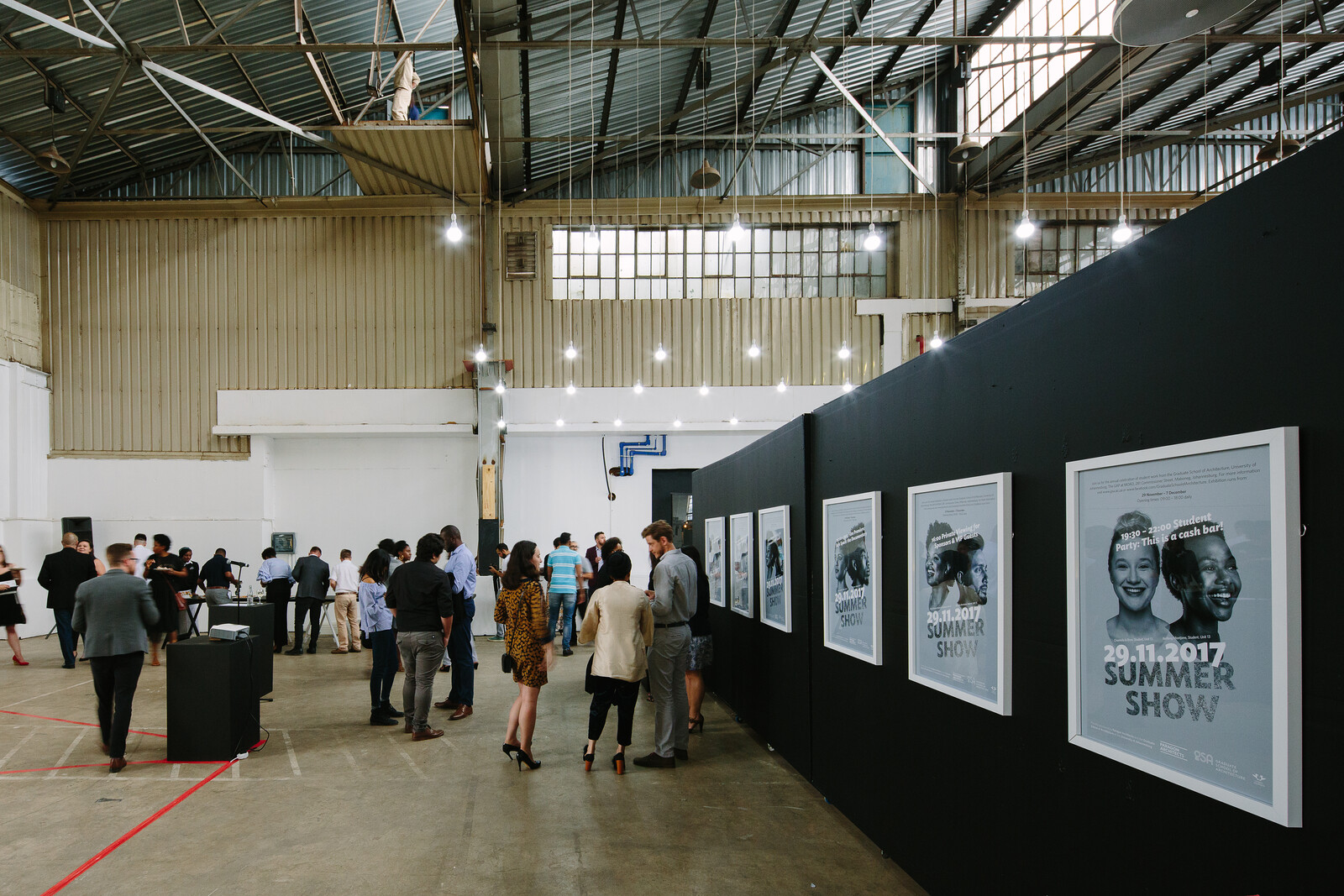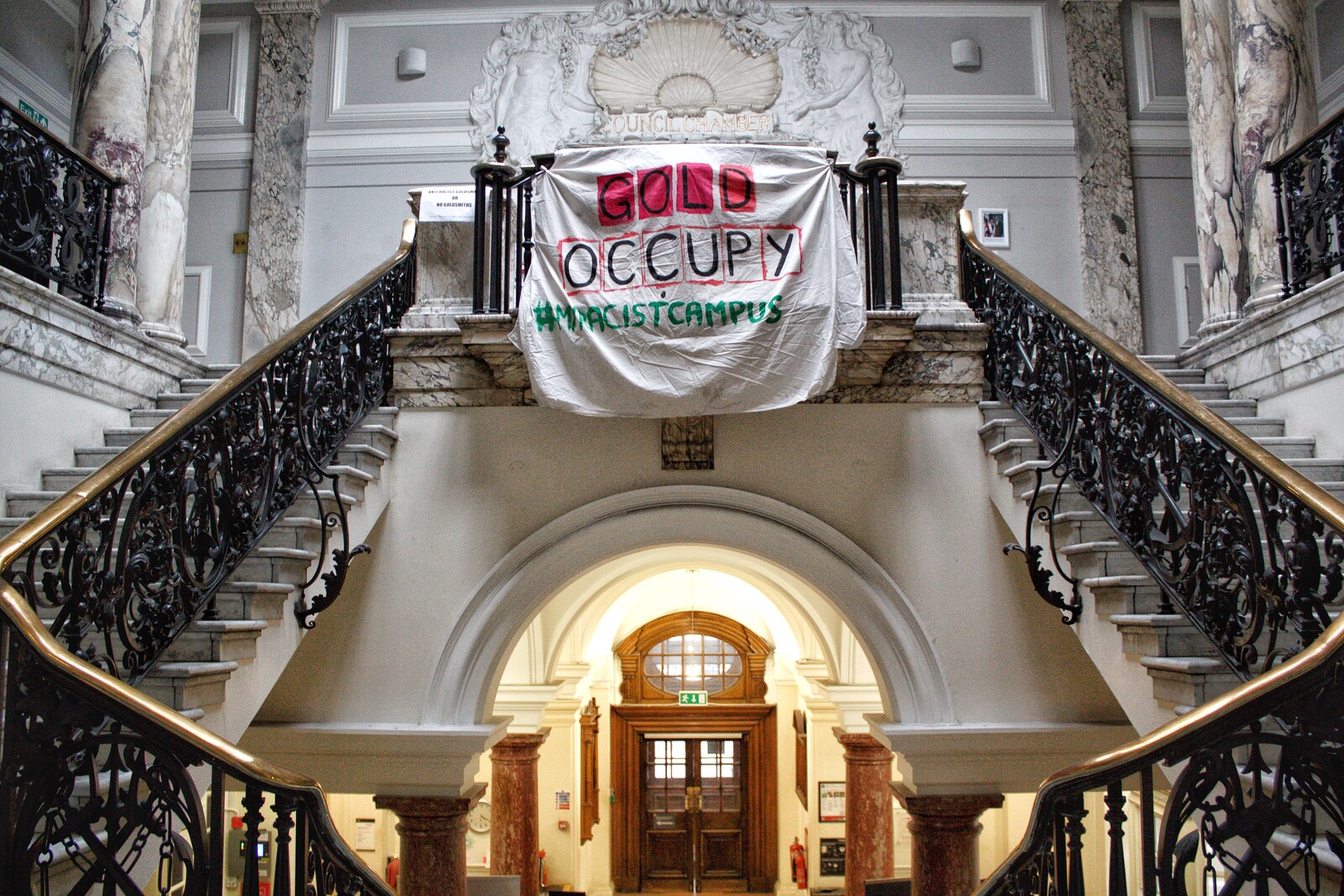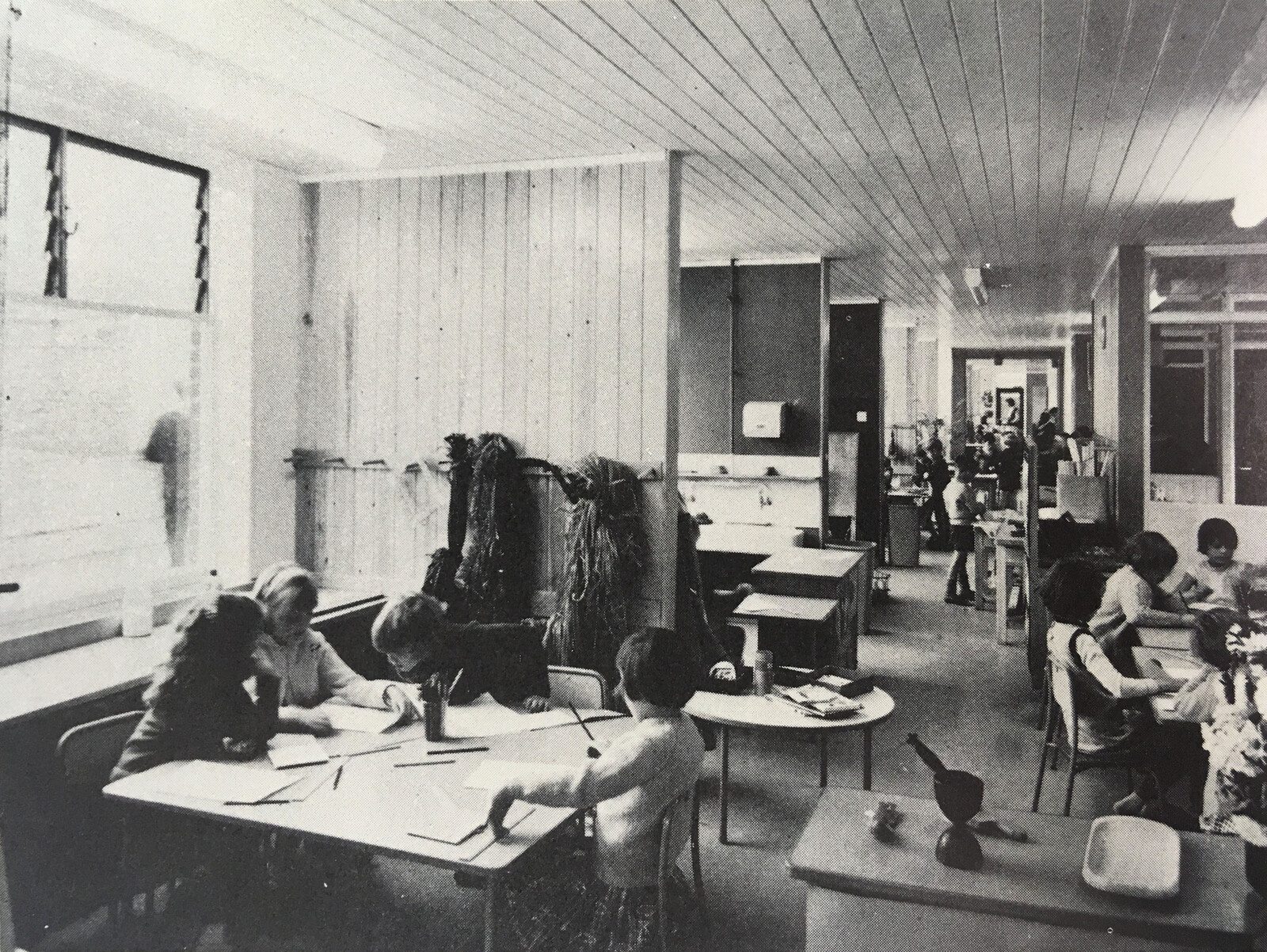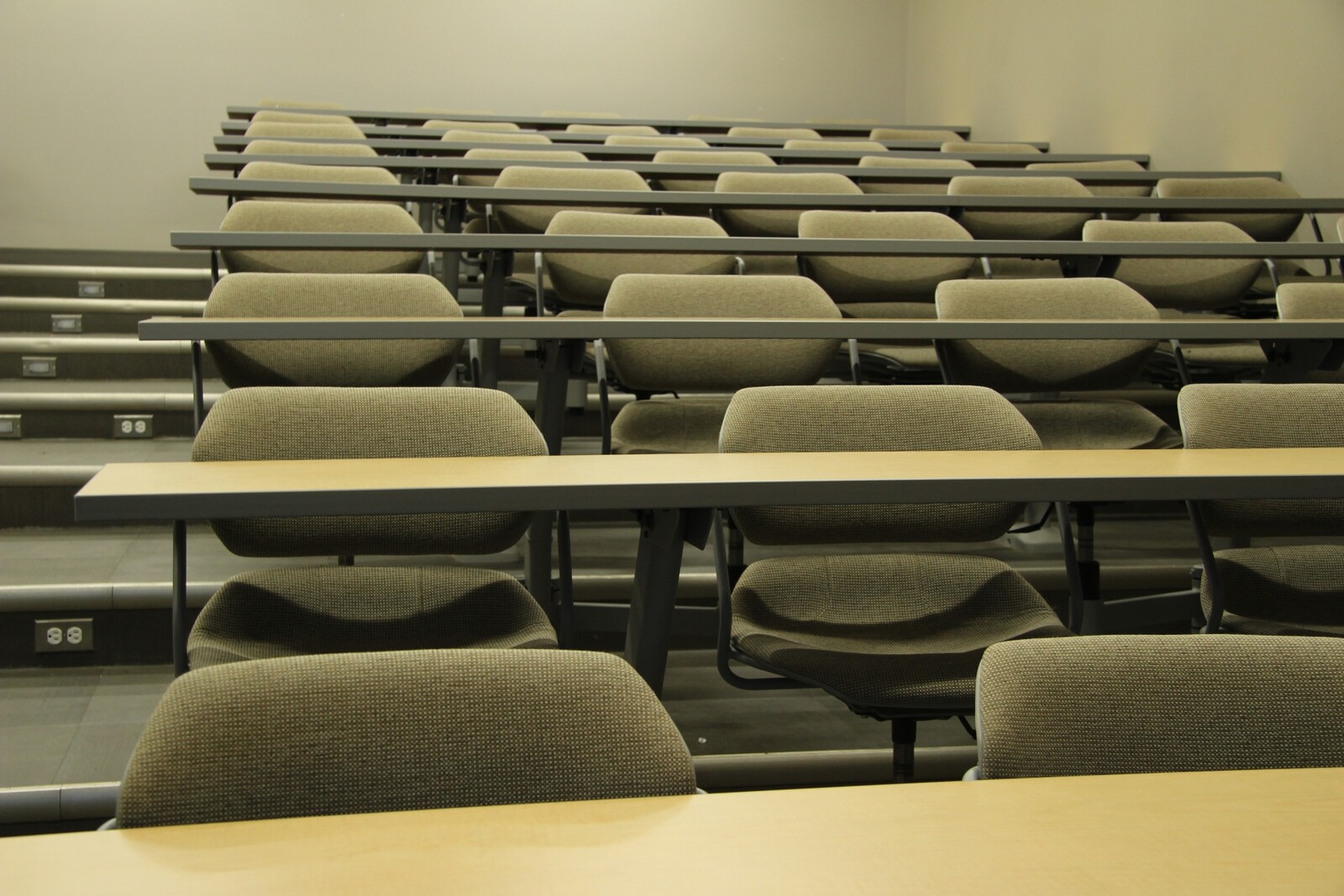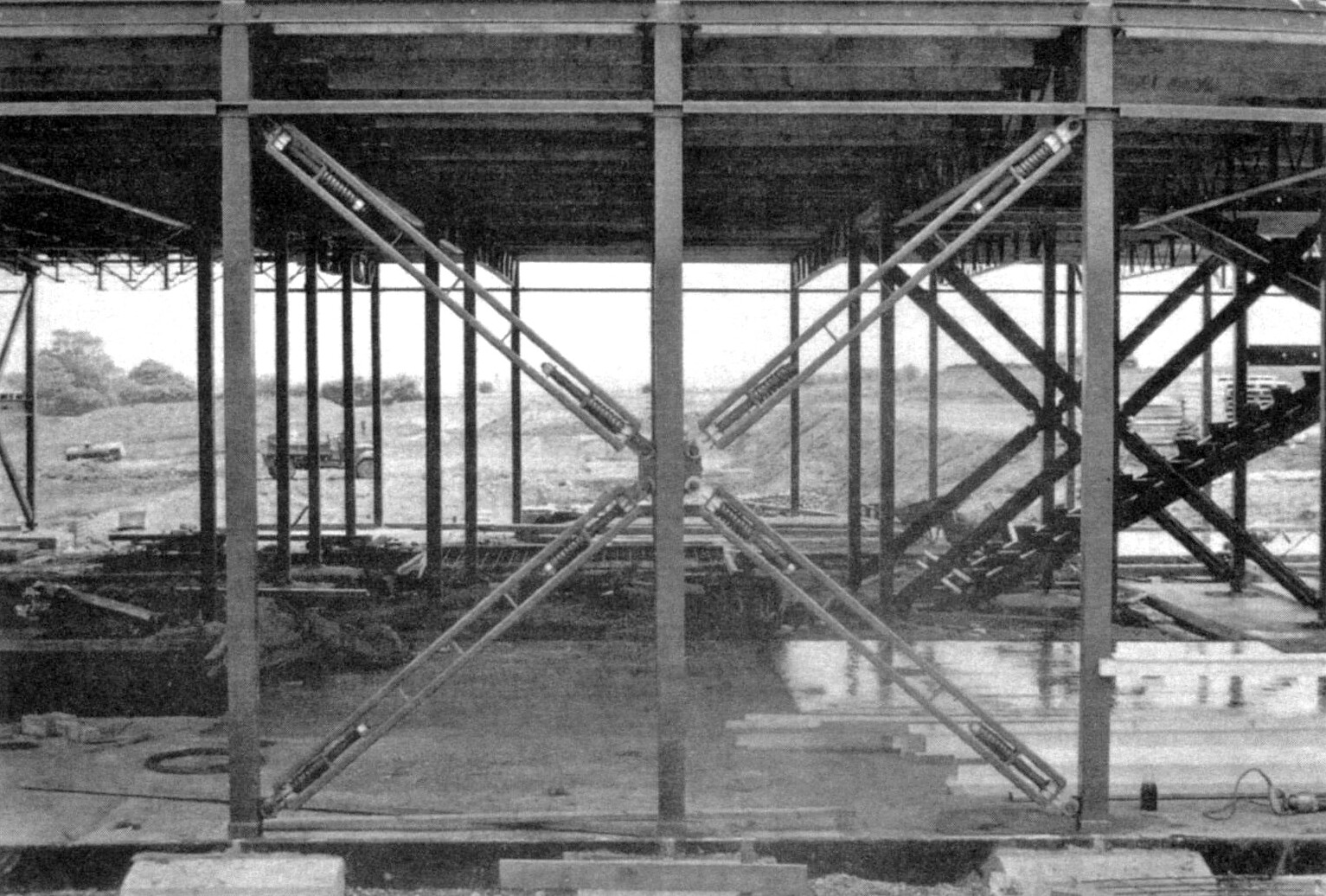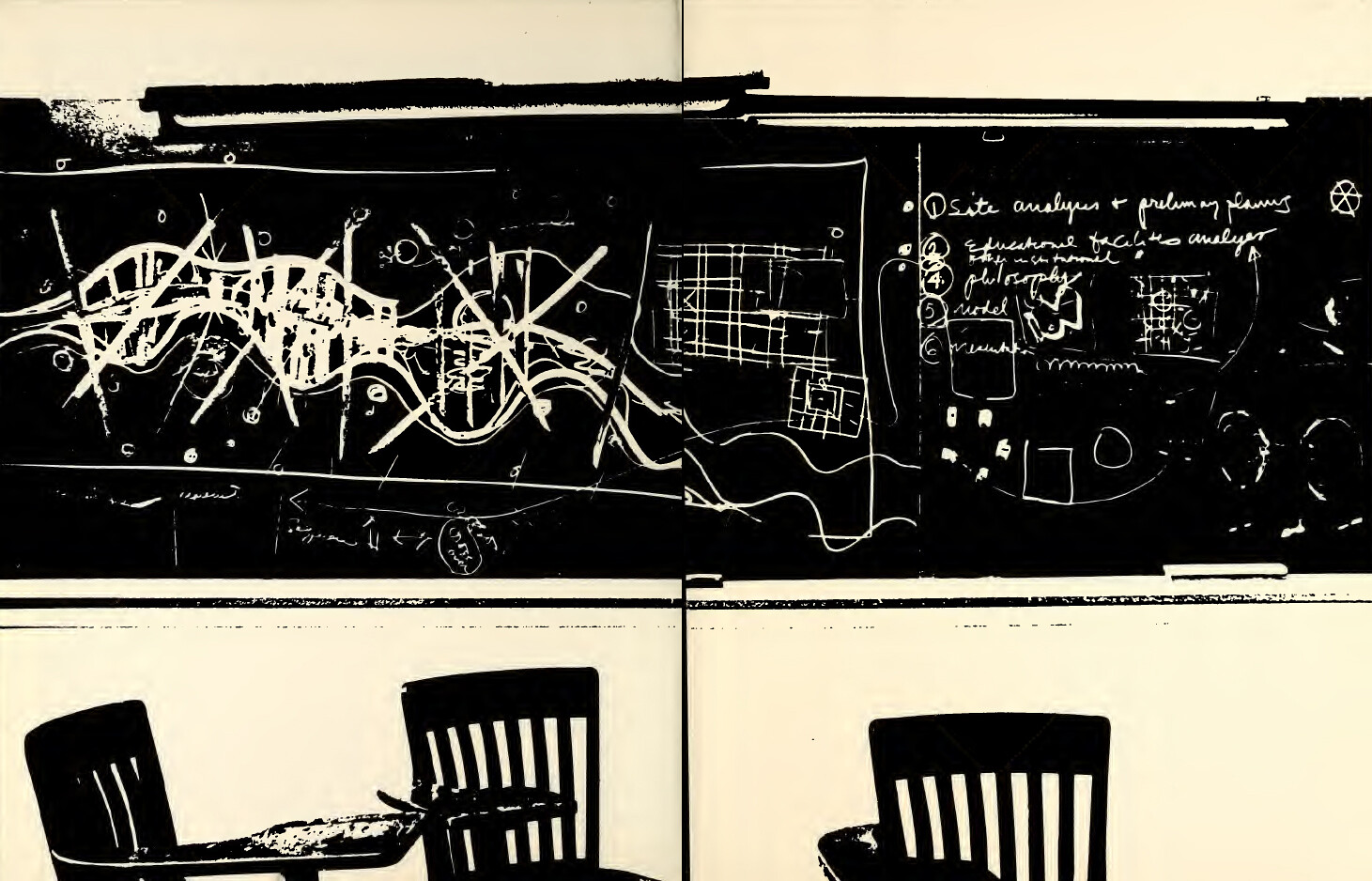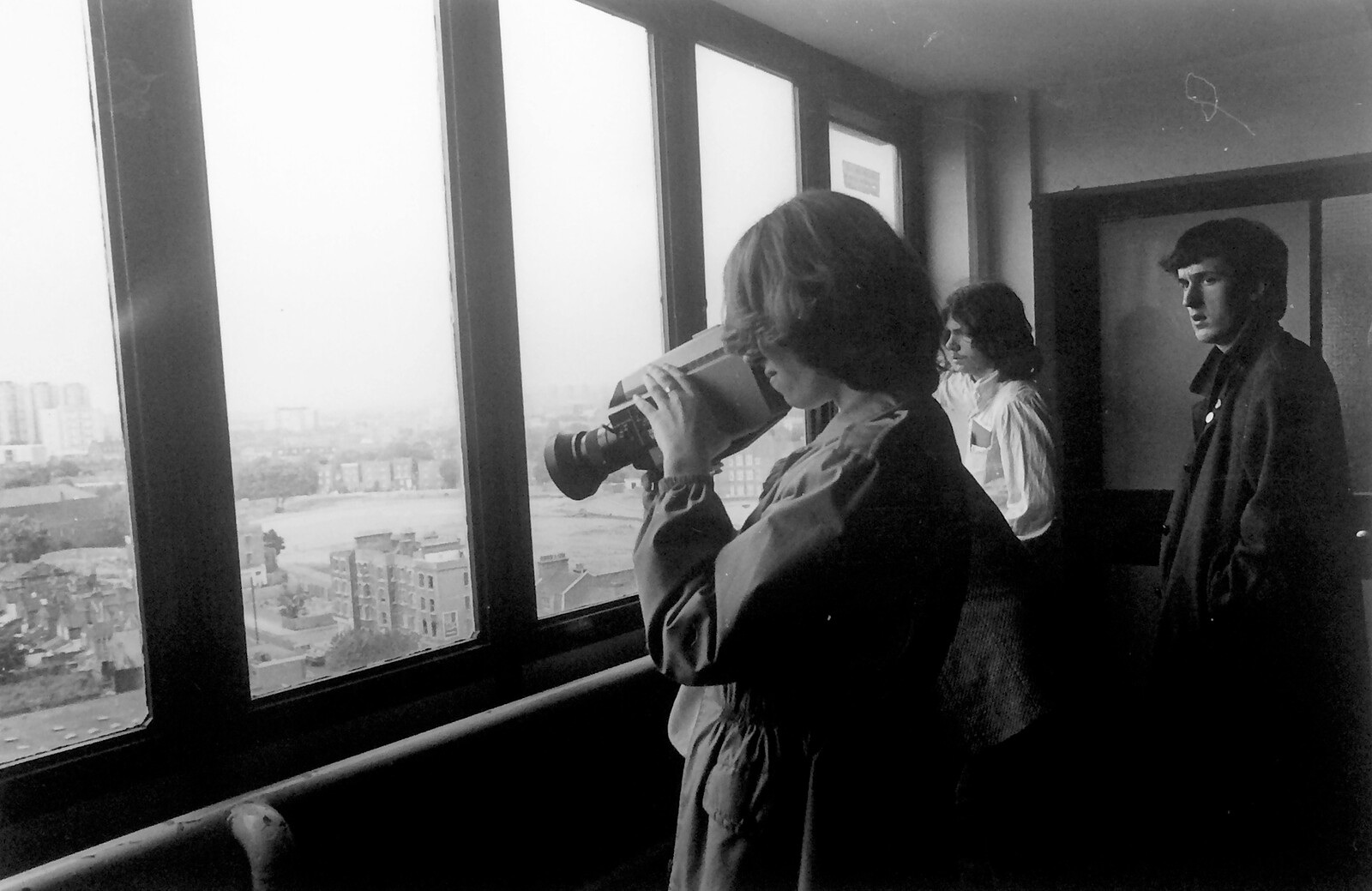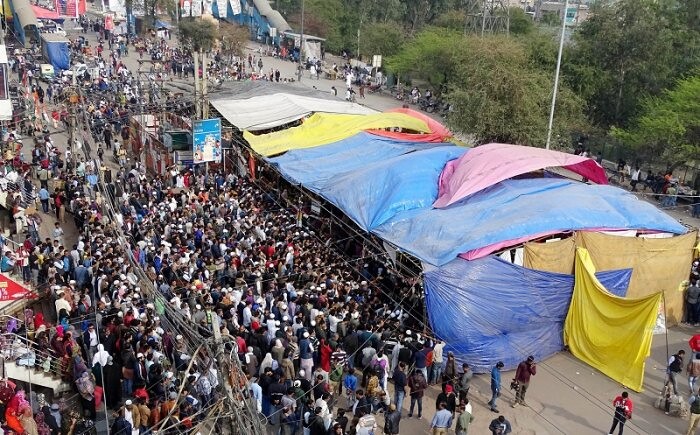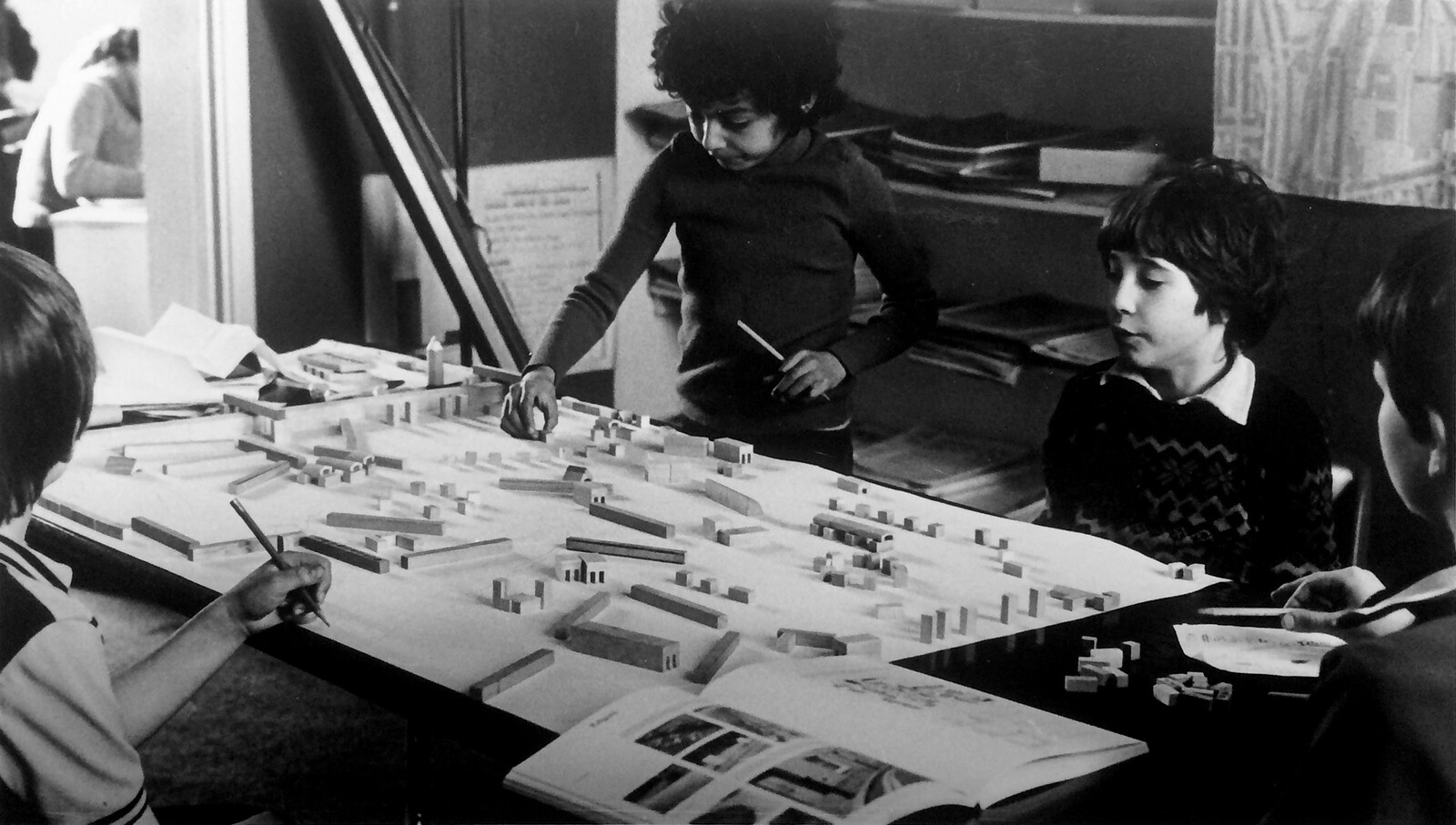Remote education was originally invented to overcome distance, to make learning accessible to those who could not converge in centralized campuses. Social isolation and the fear of contagion today is forcing the use of similar methods to continue learning processes while instituting distance, severing the chains of viral transmission. Closed in at home, the image of the early Open University appears in the reflection of our screens, with its famous charter playing on an imaginary radio: “open to people, places, methods, and ideas.” In the rear-view mirror of history, objects are indeed closer than they appear, and this pioneering historical initiative to broadcast higher education in print, radio, and television might reveal blind spots and mismatches in the experiments taking place today.
When the Open University was founded in the late 1960s, being “open to people” meant providing education and the opportunity to pursue certified degrees to working adults who had not previously had the chance to study. One of its early advertisement asked: “If you didn’t have the chance to go to university after school, what are you doing after work?” No prospective student would be turned down because they had no previous academic qualifications. To emphasize this, Lord Crowther, Open University’s first Chancellor, even read aloud the verses of Emma Lazarus’s poem “The New Colossus,” famously written for the Statue of Liberty, in his inaugural speech: “Give me your tired, your poor, / Your huddled masses yearning to breathe free, / The wretched refuse of your teeming shore. / Send there, the homeless, tempest-tossed, to me: / I lift my lamp beside the open door!”
Being open to people also meant being responsible for people, for providing a foundation on which to progress and build a life-long process of learning. Instead of selecting the best, it meant taking the responsibility of preparing students to become their best. Aptly named, “Foundation Courses” were meant to provide students with an interdisciplinary basis for further education. Mathematics, Science, Technology, Social Sciences, and Arts departments articulated a vision for what common knowledge meant and collaborated to produce entry level courses that would make students both conversant in the debates of their time and prepared with the skills needed to make further academic progress. This was all a way to address the structural inequalities built into the passage from school to university; of inventing opportunities where there were none.
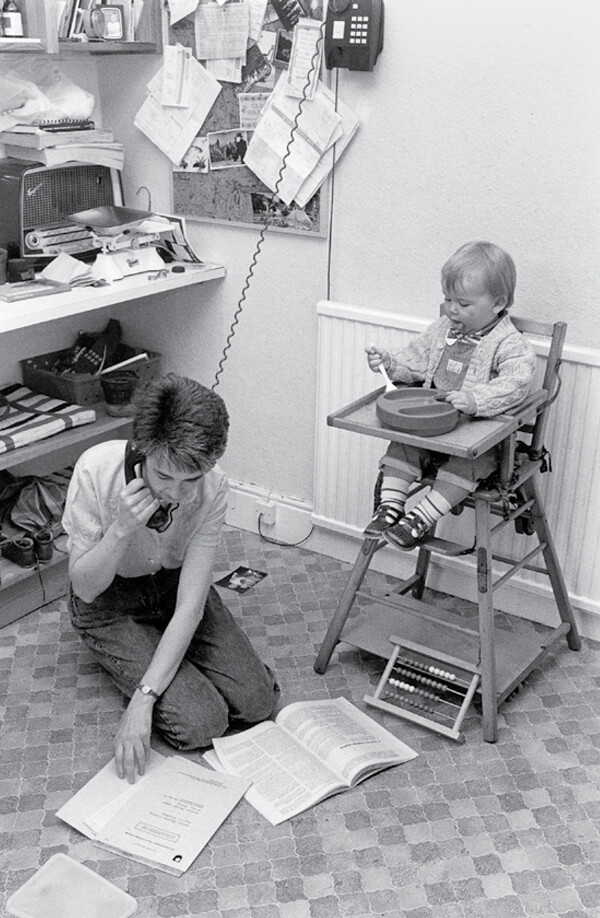

Telephone tutorials enabled those who could not attend face-to-face tutorials to receive support. Source: Daniel Weinbren, The Open University: A History (2014).
While the student body was homebound, faculty and the teams necessary for research and production still needed to come together. In order to facilitate this, a new industrial and educational complex was built in Milton Keynes, the last of the English New Towns and the only one designed specifically as a city for the new knowledge economy. While the Open University’s approach to pedagogy rejected those derived from classical spatial configurations such as the cloister or court—whose very names signify closure—its education was produced in a place that resembled a factory more than a campus. And indeed, a factory was necessary to meet such a task.
Despite its physical presence in Milton Keynes, Lord Crowther described the university in his inaugural speech as “disembodied and airborne,” one capable of flowing “all over the United Kingdom.” The university would go “on air” starting in 1971, finding its place inside BBC’s regular radio and television broadcasting schedule. Each course was produced by three distinct teams: course faculty, educational technology, and media production. For the first ten years, course units were even scripted, presented, recorded, and edited at BBC’s studios at Alexandra Palace. In those areas of the country out of broadcasting range, physical copies of the film and audio ensured its reach. And a wide network of almost 300 study centers made the territorial system local.
Being open to methods meant experimenting with ways of disseminating knowledge. Remote education has had a long history of adapting to new modes of communication and distribution. Long before educational radio and television, correspondence courses started to offer alphabetization and vocational training in ways that moved information instead of moving people. What was innovative about the Open University, however, was that it mobilized virtually all of the resources and channels that were available at the time: print, radio, television, mail, telephone, and sometimes even local libraries in what was called a “blended system.”
Television and radio programs were the most public-facing elements of its program, but on their own they could not live up to the responsibility of education. The fulfillment of its promise of homebound learning required a careful choreography between timed broadcasts, printed supplements, mail-order technical equipment, and assessments and tutorials by mail and over the phone. Dematerialized learning required careful encapsulation for the educational program to move safely through a dense domestic landscape of media and into the minds of its students. The traditional course syllabus was replaced by a broadcast schedule; bibliographies were compiled into print anthologies; laboratory experiments were repackaged and distributed as DIY kits; broad debates were synthesized as specific examples; and lectures were transformed into small documentaries. Television also imposed its own limits on the amount of times each program, or each course, could be aired and run.
Teaching through broadcast media implies addressing not a given class or discipline, but an unseen, unknown, and unspecified audience. Academic freedom, in this sense, was only good so long as it was fit to air. This meant that courses language relied more on BBC’s manual of style, intended for a general audience, than on any professional jargon or set of standards. For the particular subject of modern architecture and design, addressed in the third level Arts course A305, this implied a performative approach that would relate to the general living experience of the audience.1 TV became a way of visiting a modern house, walking through the door, looking around, and communicating how it works. Radio, which at the time was one of the few modern objects common to most households, aired plays in which the voices of modern architecture and design’s protagonists communicated their work.
In a world made small by the global audience of the moon landing and other global satellite broadcasts, BBC’s listeners and spectators made space for higher education in their living rooms, gathering around the television set to receive it like a guest. For a brief moment, before video recording technology became widely available, learning was broadcast in prime time, capturing the attention of domestic collectives at a national scale. On top of the licensing fees charged by the BBC, and enrollment fees for course materials, learning “on air” required students to subsidize an important part of the infrastructural cost of their education: students had to provide domestic space and the equipment for its reception. Yet, this domestication of learning allowed many limits and borders traditionally associated with higher education, such as race, class, or gender to be transgressed. And even before the later enrollment of international students and the translation of the model to other countries, Open University courses and programs transgressed the internal and external borders of the Kingdom, being open to military personnel stationed abroad, workers on offshore platforms, and incarcerated people, among others.
Broadcast media engenders a collective in solitude. Before the Walkman privatized the soundscape of our lives, dancing to the radio was a form of synchronization, of belonging to something together across space and in time. Similarly, broadcasting education inscribes a new learning collective within a wider audience. While not everyone prepared for or watched the programs with the same degree of intentionality, their ephemerality gave a rhythm to learning and provided an urgency of simultaneity; of watching it before it vanished. And for those who did, there were summer sessions: intense moments of collective learning where students and faculty could come together in empty classrooms and campuses across the UK.
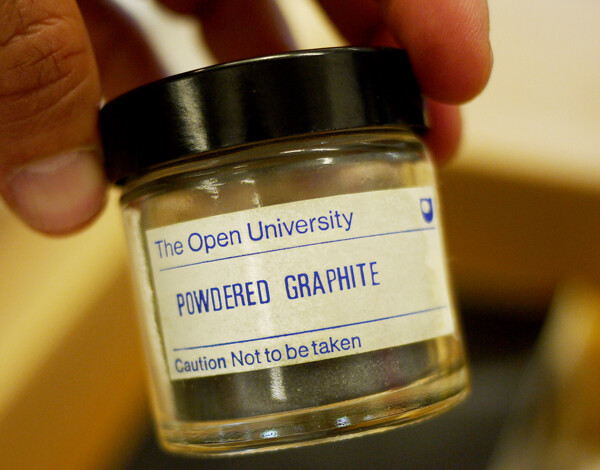

Sample content of the home experiment kit in a box developed for Unit 1 The Empty Box of the second level interdisciplinary course TAD292 Art and Environment (1976).
Being open to ideas implies treating knowledge not as something to be passively transmitted and received, like a wealth of information being deposited into a mental bank, but rather as something that is constantly being produced in dialogue between all of those involved. This implied learning to learn, a pedagogical commitment to feedback and adjustment, a continuous exchange without rigid hierarchies between teacher-student and students-teachers, and symmetrical commitments to change and innovation.2 Course A305, History of Modern Architecture and Design 1890–1939, was exemplary in this regard. A playful plan reading guide was inserted as a page marker into the course booklets, which enabled students to compare architectural plans with the visual impressions of televised visits. Familiarized with the tools of the discipline, the students could then produce the project report that the course required: a careful survey of a modern buildings close to them. In providing students with the instruments to expand its own knowledge base, the course was actively learning, accumulating an alternative map of modern architecture. Some of these reports were instrumental for historical preservation, while others provided witness testimonies to since demolished and now largely forgotten canonical buildings, like Quarry Hill in Leeds.3
The engagement of A305 students with the housing debates of early modernity is also an important example of how to create dialogical experiences at a distance. When inscribed within a learning community, the longstanding disciplinary quarrel between high-rise flats and suburban semi-detached houses suddenly became about the students’ living conditions. This not only gave the debate new weight, but also took it in new, more meaningful directions.
To engage and participate in academic dialogue requires listening as well as speaking, and only a very active listening—dwelling carefully in and on the thoughts of others—can lead to the emergence of new voices, new actors, new visions, and new vectors. Many important ideas are in fact better communicated to the solitude of radio listeners than to an auditorium. Close attention to student experience, to bottom-up histories, to people’s histories, is essential for the voices which normally do not take up words in the lecture hall to start a dialogue, a conversation.
In 2017, I reenacted the A305 course with my students at the Autonomous University of Lisbon’s architecture school as an experiment. Using these course materials with students in a traditional architecture school reversed many vectors and produced many unforeseen situations. At a distance of a full generation and immersed in new regimes of attention, some of the material evidently lost its freshness. But the noise and the distortion that came from the history of speaking through so many means and to so many people were surprisingly congenial to many students and the way they learn today. The conflict in students between being part of a media experiment and knowing that they were watching and listening to an architecture history course designed for a wide audience was a reminder of how easy it is to confuse the interior of the academy’s ivory tower for the world, how much of an urgency there still is to create friction between architecture education and the world, and lastly, how open access not only means being open, but also being in public.
In the fall of 2017, the Canadian Center for Architecture exhibited The University is Now on Air: Broadcasting Modern Architecture, a research work mainly focused on the Open University course A305: History of Architecture and Design 1890–1939. On the occasion, the CCA also made the television programs of the course available on their YouTube channel. See ➝.
Following the dialogical relation proposed by Paulo Freire in The Pedagogy of the Oppressed (1970).
Many of these reports were deposited into and are currently stored in the Royal Institute of British Architects’ archives.
Architectures of Education is a collaboration between Nottingham Contemporary, Kingston University, and e-flux Architecture, and a cross-publication with The Contemporary Journal.
